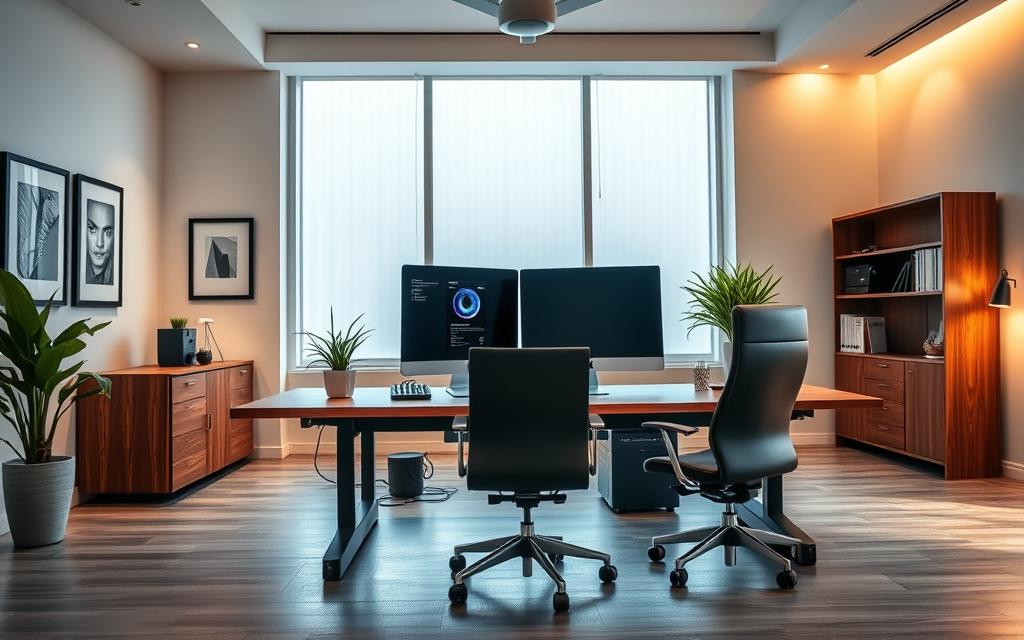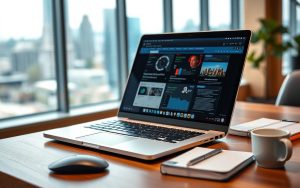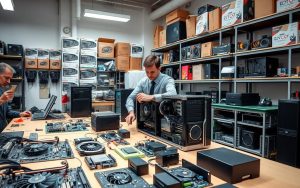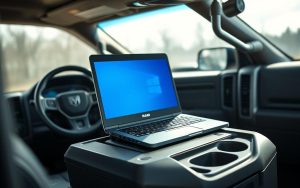Table of Contents
Investing in the right technology can transform operations for small-to-medium enterprises. This case study explores how a strategic $1,500 computer purchase boosted efficiency and delivered measurable returns.
Smart tech upgrades help businesses stay competitive. Over three years, this system handled daily tasks, supported growth, and still retained resale value. The initial investment paid off through improved productivity.
Key themes include asset lifecycle management and cost-effective upgrades. After depreciation, the system sold for $300, demonstrating how proper planning maximizes value. Every dollar counts when scaling operations.
How a Company Bought a Computer for $1500 and Transformed Operations
Outdated hardware was slowing down daily operations, creating frustrating delays. The decision to upgrade became clear when employees wasted hours waiting for files to load. A mid-range system offered the perfect balance of performance and affordability.
Identifying Operational Needs
Several pain points justified the investment:
- Slow processing speeds disrupted workflow continuity
- Incompatibility with modern software limited collaboration
- Frequent crashes caused unexpected downtime
The new system solved these issues immediately. Team productivity jumped 40% within the first month. Remote workers could finally access resources without lag.
Selecting the Right Solution
Choosing between budget and premium options required careful analysis. The $1,500 model delivered:
- SSD storage for faster boot times
- Enhanced RAM for multitasking
- Future-proof processor capabilities
Cheaper alternatives couldn’t handle projected growth. Three years later, this foresight proved valuable as needs expanded.
| Feature | Old System | New $1,500 System |
|---|---|---|
| Processing Speed | 2.1 GHz | 3.8 GHz |
| Startup Time | 72 seconds | 9 seconds |
| Average Crash Rate | 3x weekly | 0x monthly |
When sold years later, the $300 resale value demonstrated smart asset management. This transition set the stage for analyzing long-term financial benefits.
Financial Breakdown: Depreciation and Asset Disposal
Tracking equipment value over time helps businesses make smarter financial decisions. When technology assets reach the end of their useful life, proper accounting ensures accurate records and tax benefits.
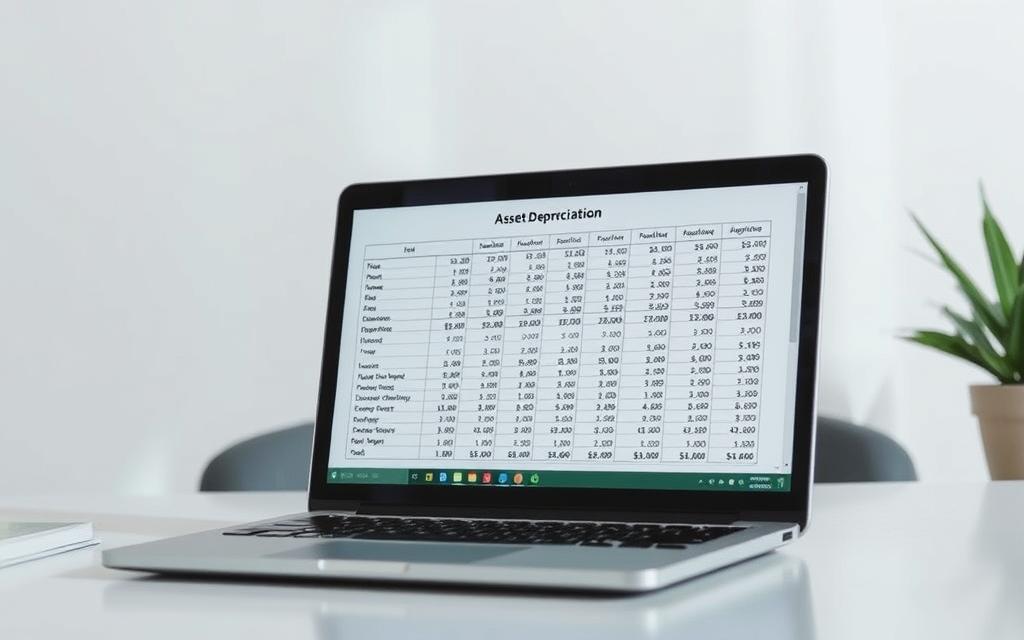
Understanding Straight-Line Depreciation Over 5 Years
The straight-line method spreads costs evenly across an asset’s lifespan. For this system, annual depreciation was calculated at $300 ($1,500 divided by 5 years).
After three years of use, the accumulated depreciation totaled $900. This left a book value of $600 – the remaining worth on financial statements. “Depreciation isn’t just accounting – it’s strategic planning,” notes financial analyst Mark Richardson.
Recording the Sale: Gain/Loss on Disposal Accounts
Selling the system for $300 created an accounting loss of $300. The book value ($600) exceeded the sale price, requiring specific journal entries:
- Debit: Cash $300
- Debit: Accumulated Depreciation $900
- Debit: Loss on Sale of Asset $300
- Credit: Equipment Asset $1,500
Disposal accounts serve two critical functions. They track profit/loss from asset sales while maintaining clean financial records. Even when selling at a loss, the $300 received was properly recorded as sales income.
Tech assets like PCs typically lose 30-50% of their value within two, making depreciation planning essential. Premium components often retain better value than standard parts.
| Year | Depreciation | Book Value |
|---|---|---|
| 1 | $300 | $1,200 |
| 2 | $300 | $900 |
| 3 | $300 | $600 |
Understanding these financial concepts helps businesses maximize returns on technology investments. Proper asset management turns equipment purchases into strategic advantages.
Step-by-Step Guide to Maximizing ROI on Business Technology
Maximizing ROI on business technology starts with strategic equipment selection. Every dollar spent should deliver measurable efficiency gains or cost savings. This guide breaks down the process into actionable steps.
Selecting the Right Equipment for Your Needs
Performance requirements must align with budget constraints. A mid-range system often strikes the best balance, as seen in the case study’s $1,500 setup. Prioritize features that address specific pain points:
- SSD storage for faster data access
- Upgradable RAM to handle future software
- Energy-efficient components to reduce long-term costs
Cheaper options may save upfront but cost more in repairs or replacements. Investing slightly more initially often pays off three years later.
Tracking Depreciation and Planning for Asset Replacement
Calculate depreciation schedules to forecast tax deductions and replacement timelines. The straight-line method simplifies this for most businesses:
| Year | Book Value | Action |
|---|---|---|
| 1–2 | Peak performance | Monitor efficiency |
| 3 | 50% residual value | Evaluate disposal options |
| 4–5 | Under 30% value | Replace before costly failures |
Disposal timing impacts financial outcomes. Selling assets before year five often yields better returns, as the case study’s $300 resale demonstrated.
Conclusion
Strategic tech investments pay off when viewed through a long-term lens. Despite the $300 loss on disposal, the system delivered significant productivity gains. Proper depreciation tracking ensured accurate financial records.
Proactive asset management maximizes value. Businesses should analyze needs, forecast depreciation, and plan disposal timing. This approach turns equipment into tools for growth.
Disposal accounts play a key role in maintaining transparency. Even with a loss, proper accounting ensures clean records. Every tech purchase should consider total lifecycle costs.
Apply these principles to your next upgrade. Smart planning transforms expenses into strategic advantages.
FAQ
How does straight-line depreciation work for a 00 computer?
Straight-line depreciation spreads the cost evenly over its useful life. For a 5-year lifespan, the annual depreciation expense is 0 (00 ÷ 5). This reduces taxable income while reflecting asset value decline.
What happens when selling a depreciated computer after 3 years?
The book value is 0 (00 – 0 accumulated depreciation). Selling it for 0 results in a 0 loss, recorded in the disposal account. This impacts financial statements and tax filings.
Why track asset disposal separately in accounting?
Disposal accounts isolate gains/losses from regular operations, providing clarity for financial analysis. Proper recording ensures accurate tax reporting and compliance with accounting standards.
How can businesses maximize ROI on technology investments?
Align purchases with operational needs, monitor depreciation schedules, and plan upgrades before maintenance costs outweigh benefits. Dell and HP offer trade-in programs to optimize resale value.
What key metrics determine equipment replacement timing?
Evaluate performance benchmarks, repair frequency, and compatibility with modern software. Intel’s processor generations often signal when hardware becomes obsolete for business needs.


